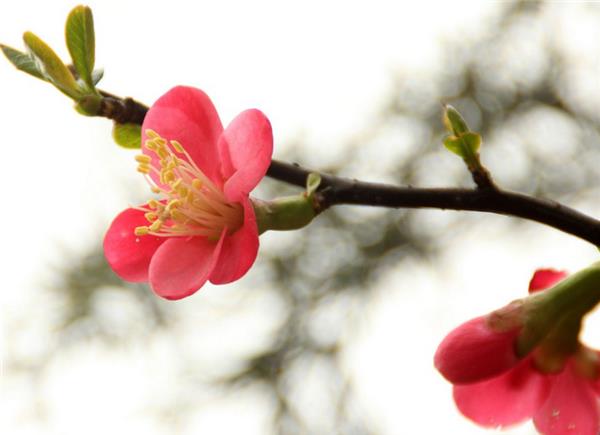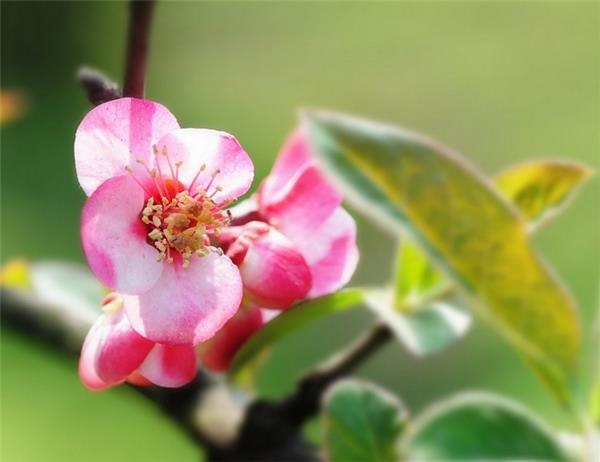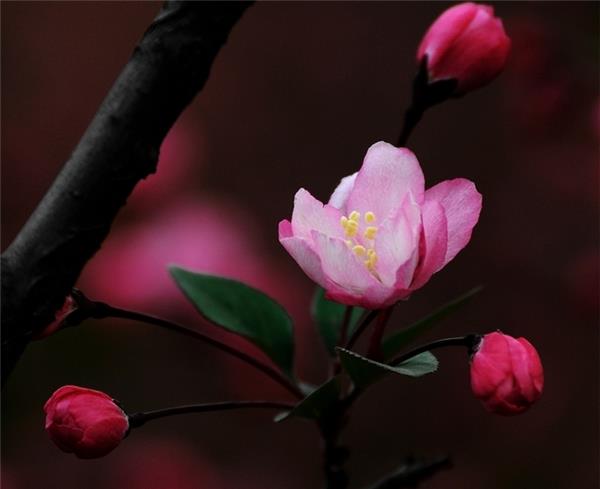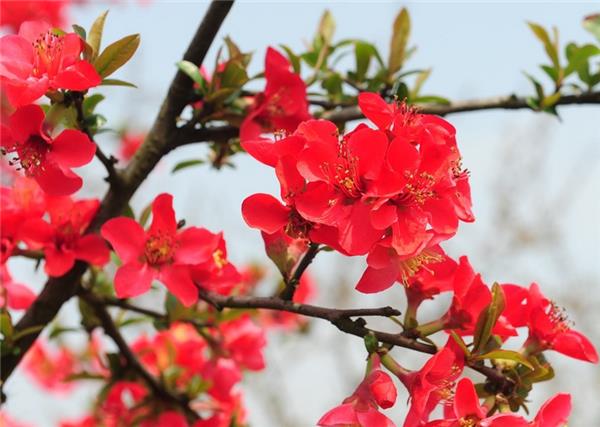Pest control methods of papaya and begonia in winter
Papaya Begonia is a good tree species for garden greening because of its brilliant flowers and colors, good tree shape and few diseases and insect pests. Can be planted in the corner of the garden wall, forest edge and other places, spring can enjoy flowers, autumn can see fruit, strange branch type, is a good tree species for the layout of landscape, the following share with you the winter pest control methods of papaya and begonia.

Pest control methods of papaya and begonia in winter
With the advent of winter, most flower diseases and insects enter the overwintering (or dormant) state in various ways. During this period, all kinds of diseases and pests are basically inactive, which is a good season for prevention and control. If the prevention and control measures are effective, the occurrence and harm degree of diseases and insect pests in the coming year can be greatly reduced, and the effect of getting twice the result with half the effort will be achieved.
Clean the garden: the pathogens (bacteria) or overwintering eggs of most flower diseases and insect pests survive the winter in the withered branches, leaves or weeds in the garden and come out when the conditions are suitable in the coming year. Therefore, the thorough removal and destruction of litter and weeds in the garden in winter and the improvement of sanitary conditions can greatly reduce the sources of diseases and insect pests. This has a significant effect on the control of anthracnose, powdery mildew, red spider and moth of rose, rose, chrysanthemum, peony, begonia, locust, willow and other flowers and trees.

Cutting off the branches and leaves of diseased insects: winter pruning is one of the important links in garden management. Combined with winter pruning, the branches and leaves of diseased insects should be cut off. The branches and leaves of diseased insects should be cleaned in time and transported out of the garden for centralized treatment.
Deep ploughing in winter: deep ploughing in winter can cause mechanical damage to the larvae, pupae and eggs of underground pests lurking in the soil, such as grubs, ground tigers, mole crickets, golden needles, etc., and can be pecked by natural enemies such as birds after being exposed to the surface. Artificial hunting can also be carried out if necessary. In addition, deep ploughing buried the pathogens on the surface of the soil into the deep soil layer, and the pathogens in the deep soil layer were turned to the ground, which destroyed the suitable environment of diseases and pests and effectively controlled the occurrence of diseases and insect pests.

Whitening protection: whitening branches can not only effectively prevent frost injury and sunburn of flowers and trees in winter, improve the disease resistance of flowers and trees, but also destroy the overwintering places of diseases and pests, playing the dual role of both anti-freezing and killing insects. It is especially good for mites and scale that overwintering in the bark. The commonly used formula of whitening agent is: quicklime 5 kg, stone sulfur mixture 0.2 kg, salt 0.3 kg, lard (other animal and vegetable oil can also be used) 0.2 kg, water 17 kg. Preparation method: first hydrate the quicklime and salt, then add lard and stone sulfur mixture and stir evenly. Special attention: quicklime must be fully dissolved, otherwise it is easy to cause burns when applied to the branches of flowers and trees.
Drug control: as most of the diseases and insect pests are dormant in winter, winter drug control measures can be adopted for those diseases and insect pests that are not easy to be controlled in the occurrence season. For example, spraying with 50-100 times liquid oil emulsion can control shell insects, and using 800 times liquid omethoate according to 4 kg per square meter can control chrysanthemum gall mosquitoes. Spraying 1% Bordeaux solution for 2-3 times in late winter can play a good role in the control of pear juniper disease, rose black spot and other diseases.

This is the end of the introduction of pest control methods of papaya and begonia in winter. I hope the above content can be explained to everyone!
Related
- Wuhan Hospital Iron Tree Blooming Result Was Instantly Frightened by the Gardener Master
- Which variety of camellia is the most fragrant and best? Which one do you like best?
- What is the small blue coat, the breeding methods and matters needing attention of the succulent plant
- Dormancy time and maintenance management of succulent plants during dormancy
- Minas succulent how to raise, Minas succulent plant pictures
- What are the varieties of winter succulent plants
- How to raise succulent plants in twelve rolls? let's take a look at some experience of breeding twelve rolls.
- Attention should be paid to water control for succulent plants during dormant period (winter and summer)
- Watering experience of twelve rolls of succulent plants
- Techniques for fertilizing succulent plants. An article will let you know how to fertilize succulent plants.



